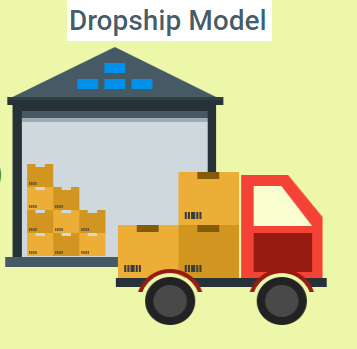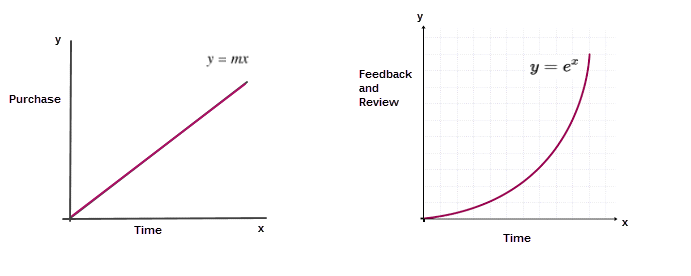As an owner of a marketplace, pricing is one of the most important decisions you need to make to grow faster and to compete with others. Marketplace businesses are long-term initiatives.
To build a sustainable and successful marketplace, you need to find a business model that will finance its operations.
But, before they jump into Pricing Models, Let’s start by getting good general information of Drop Shipping Marketplace and Standard Marketplace to make sure that we are all on the same page:
Dropship Marketplace
Drop Shipping is an inventory management technique that enables a retailer to sell a product for which the retailer is not currently holding in his inventory.
In other words, Dropshippingg allows marketplace owners or you can say merchant to start their online shop without holding the inventory that means online merchants don’t need to manage the warehouse or shipping management.
The dropship model is super beneficial for the startups where they can not hold a huge amount of managing warehouses, shipping management, and delivery.
If you want to jump deeper into the ocean of Dropship Marketplace, we would strongly suggest you read this wonderful Quora post by Matthew Carroll- https://www.quora.com/Retail-Distribution-Is-drop-shipping-the-best-way-to-bootstrap-an-e-commerce-company/answer/Matthew-Carroll
Basically, there are three ways by which Dropshipping helps in Marketplace:
- Reduces Transportation Expenses: The theory of drop shipping is brilliant because it cuts out the retailer’s Inbound Shipping.
- Reduces Inventory Risk: We all remember how scary and painful the Great Recession was and it becomes one of the most significant driving forces to widespread adoption of this technique.
- Positive Cash Flow: Once the drop shipping agreement has been arranged, the retailer is in a prime spot – they have a product to sell, but they are not financially obligated to purchase any of it.
Standard Marketplace
Standard Marketplace is a platform where vendors /sellers will be able to sell their products.
The marketplace is a super complex system where many vendors/sellers provide shipping from their end and thee various marketplace provides shipping based on vendor behalf.
So you may say inventory management will be at the vendor panel also it can beat store owners as well.
Most of the big marketplaces are delivering the goods on behalf of vendors that means when a buyer purchase any item store admin and vendor are notified automatically.
The marketplace shipping agent will collect the item from the vendor if they don’t have any stock and will deliver the item on behalf of the vendor.
You certainly have heard of the two leaders in the online marketplace space – Amazon and eBay. And, if you are reading this, you likely already have your products listed there.
But, because these retail giants are big ones and your product is little known may be getting lost in the shuffle and your exposure remains below-developed.
With the gen-next cool trend to start working on new and innovative ideas. Nowadays there is a tremendous number of startups coming up, but the irony is the majority of start-ups failed as soon as they entered the market.
And one of the most common reasons why start-ups fail is that they pick a business model that does not scale to ensure long-term sustainability.
Rule Driven-
In this interesting article, we review the different options for marketplace monetization and put some light on how to choose the justified model for your business idea.
There are mainly three types of schema in the Revenue/Pricing Model:
- Commission System/ Revenue Share– Commission System is the most popular business model for modern marketplaces that charge a commission from each transaction.
As in the marketplace, there are hundreds of categories, products, different kinds of sellers/vendors. So, how does this commissioning work?
Well, it depends upon the marketplace owner how he/she wants to implement it out. There are some categories to understand in a better way or you can also visit our store to see our modules specially for Advanced Commission Magento Marketplace Advanced Commission and Marketplace Advanced Commission For Magento2.
In Commission System, four sub-commissions exist, which are equally important in the marketplace – Global Commission, Category Commission, Seller Commission, Product Commission.
Global Commission- This is the commission that works on everything, no matter what type of product is, what kind of category is, and what kind of vendor selling the product.
For each transaction on any item, the marketplace owner will get their fixed commission. Let’s take a simple example to get it better.
In some random marketplace, there are three kinds of products (A, B, C) their respective prices are 10, 20,0, and 300 and the global commission of the marketplace owner is 10%.
So on every transaction of those items marketplace owner will get $10, $2,0, and $30 as commission. There is one more way to put the global commission on the marketplace that is fixed value.
Instead of a percentage marketplace, the owner can set the fixed value on each transaction which means whatever the product price is, the marketplace owner will get fixed value on every purchase.
Category Commission – This is the commission that works on a category basis. The marketplace owner can set the commission based on categories. Suppose there is an online book store, where the different categories of books are available just like (fiction, non-fiction, cookery, comic,s, etc)
Now, the owner can apply 10% commission on fiction books, 20% on cookery, and so on. So whenever the purchases on those categories happen, according to tog commission revenue will lead to the marketplace owner.
Seller Commission – One more interesting commission structure we have. In this commission, the marketplace owner can set a different kind of commission on different kinds of sellers/vendors.
In other words,s if there are two vendors (V1 and V2) so, the owner can set a commission of 10% and 30% respectively.
Product Commission – In every marketplace,e there must be a product that is so much popular among the customers. So, to generate more and more revenue on sales of that product, the marketplace owner put a fixed commission on that product and gain profit.
-
-
- Membership Commission- A membership fee (sometimes called a subscription fee) is a model where either some or all of a marketplace’s users are charged a recurring fee to access the marketplace.
With this model, the typical value proposition for providers is that the marketplace helps them find new customers.
For customers, it helps them save costs or find unique experiences. The membership fee is a good choice if the value you provide is high and a typical user will engage in several transactions, but facilitating payment is challenging or impossible.
Typical examples of consumer-to-consumer (C2C) marketplaces with membership fees are OkCupid, Amazone Prime Videos, Gaana.com, Wink, Saavan.com, Sound Cloud, iTunes, Hotstar,r, and many more out there in the market.
- Featured Products/ Advertisements – Featured list of the products is a way for providers to buy more visibility for their offerings.
If this model is used, listing on the site is typically free, but providers can pay to have their listing be featured on the homepage of the site, or at the top of a certain category.
An example of this model is UK’s most popular classified ads website Gumtree. Even the popular online marketplace Etsy provides featured listings as one of its premium services.
For a small, non-refundable fee, a listing can be upgraded by the seller to a Featured listing. Featured listings usually sell faster and give you the following benefits:
- Membership Commission- A membership fee (sometimes called a subscription fee) is a model where either some or all of a marketplace’s users are charged a recurring fee to access the marketplace.
-
1. Featured listings are starred and highlighted to make them easier to notice and stand out of the box.
2. Featured listings are always come higher on the listings.
Hosted Advertisements (Third Party Advertisements): The hosted Adsense account allows publishers to serve Google ads on only Google hosted domains or Google partner platforms like on the blog-spot blog, YouTub,e, etc, as against your custom domains like .com, .net, .inf,o, etc.
You can get a Hosted Adsense account by registering or applying through that Google-owned platform like YouTube and the rest.
If you are an owner of a marketplace, you should always use offers rather than advertisements on your eCommerce website.
You can feature your best-selling products in offers so that the user can click on that offer and navigate directly to that product, this will help you to generate more and more revenue.
NOTE: You must not use advertisements on your E-commerce marketplace.
Support
That’s all for Revenue/Pricing Models in Magento Multi-Vendor Marketplace still have any issues feel free to add a ticket and let us know your views to make the module better contact us.





Be the first to comment.